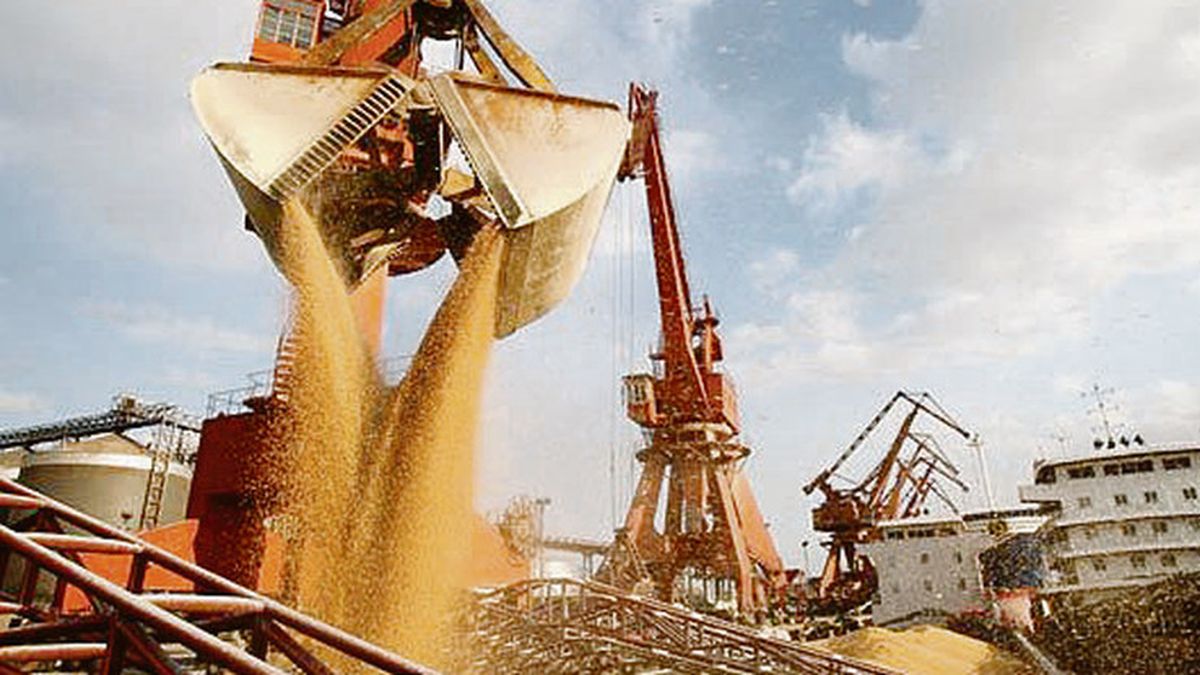Let’s be imaginative. Let’s think about a scenario where the tariff escalation between USA and Chinaunleashed by the ads of Donald Trumpadd to the global economy in a unprecedented commercial war.
For Argentina, this conflict could translate into a perfect storm: a Abrupt fall in commodities prices “As soy, corn or lithium,” combined with a Flood of Chinese industrial goods Redirent to emerging markets, saturating the offer and suffocating a local industry already fragile. If this panorama materializes, the commercial opening driven by Javier Milei It could become a mined field, with diminishing currencies and intensified inflation as a balance.
Global trade reconfiguration: data and projections
Trump’s tariff policy establishes a base tax of 10% over all imports to the United States, effective since April 5, and specific rates that reach 54% for China (20% pre -existing plus 34% additional) as of April 9. The European Union will face 20%, Vietnam 46%and Japan 24%, partially calculated by dividing the bilateral commercial deficit by the value of exports to the US, adjusted to 50%. In 2024, the US trade deficit of goods exceeded US $1.1 billion, with China contributing $ 295,000 million, Mexico US $172,000 million and Vietnam U $ s123,000 million. Tariffs seek to reduce this gap, but to a Estimated global cost at US $1.4 billion in commercial flows and a world GDP contraction of 1.5% per year.
Repliations are already underway. The European Union prepares for 18,000 million eurosincluding 50% tariffs on American whiskey, while China Plan to retal against meat, grains and cotton, sectors that in 2018-2019 lost US $ 27,000 million in sales. Canada evaluates a 25% surcharge on energy exports (107,000 million dollars in 2024), and Mexico negotiates exemptions to avoid a escalation. This exchange of measures could redirect commercial flows, with China seeking to download its productive surplus in alternative markets, including emerging ones.
Tariffs and impact on Argentina: a sector analysis
Argentina will face the 10%base tariff on its exports to the United States, which in 2024 reached US $ 6,454 million: fuels (35%), industrial products (25%), food (20%) and lithium (5%, or 322 million). A demand elasticity of 1.2 implies that This tax could reduce the demand for grains (soy and corn) by 8-12%, a loss of US $ 300-450 million annually. The meat Bovina, with 280,000 tons exported in 2024 (15% to the United States), could fall 10%, subtracting US $ 50-70 million in revenues. He lithiumkey to energy transition, will face pressure if China redirects its offerdepressing global prices by 5-7%.
At the macro level, Argentina applies an average tariff of 13% to US goods, compared to the 2.5% that the United States imposes under the most favored nation principle. If Trump raises tariffs at the Argentine level, local exports could face 13% or more, aggravating loss of competitiveness. An appreciation of the 3-5%dollar, projected by the tariff impact, would further reduce the income in pesos, with net reserves of the Central Bank at -U $ S8,000 million at the end of 2024.
Reprisals and indirect effects
Global reprisals amplify the risks. The European Union, which absorbs 16% of Argentine exports (8,000 million euros, mainly soybeans and meat), could impose barriers if its trade with the United States contracts. China, destination of 25% of external sales (US $ 12,000 million in 2024), could flood Latin America with Cheap industrial goodscompeting with a local industry that grew by 2.1% year -on -year in the last quarter of 2024. This would affect sectors such as textiles and machinery, where Argentina imports 60% of its inputs.
The increase in intermediate goods, which total US $ 40,000 million annually (20% of Asia, 15% of North America), could rise 10% due to disruptions in supply chains, adding 1.5-2 points to inflation that closed 2024 by 54%. The soybeans, whose international price averaged $ 400 per ton in 2024, could fall, according to analysts, AU $ S360-370 If China redirects its offer, reducing export income.
Opportunities and limitations in commercial opening
The Milei government seeks to take advantage of Trump’s tariff discrimination. If Brazil (14%tariff) or China lose market, Argentina could capture quota in agribusiness and energy. However, Mercosur’s common external tariff (13%) limits flexibility to unilaterally negotiate with Washington. Without a bilateral agreement, exports could fall, they calculate, 7% in 2025. The Milei-trump ratio offers a negotiation route, but US stiffness-without significant exceptions for Japan or South Korea-reduces expectations.
Thus, if the commercial war between the United States and China intensifies, Argentina could face a 10-15% drop in commodities prices, equivalent AU $ S2,000-3,000 million less in annual exports. The redirection of Asian production to markets such as the Argentine would saturate the offer of industrial goods, displacing a local industry that represents 18% of GDP and uses 20% of the formal workforce. With scarce reserves and latent inflation, Milei’s commercial opening wobbles in a protectionist world. Diversify markets (Asia and Africa, today only 10% of sales) and reduce logistics costs (20% higher than regional average) will be key to preventing this global conflict from derailing the Argentine economy at a critical moment.
Source: Ambito




